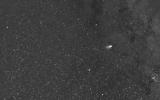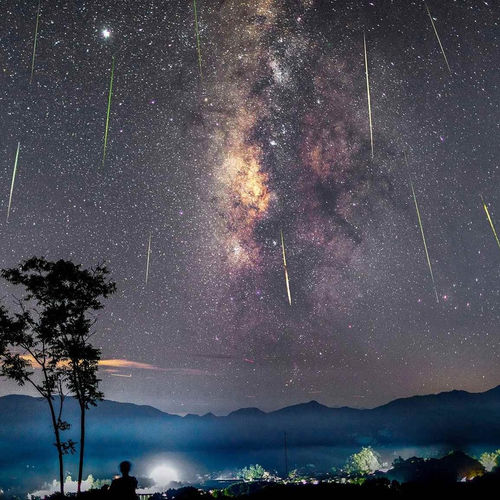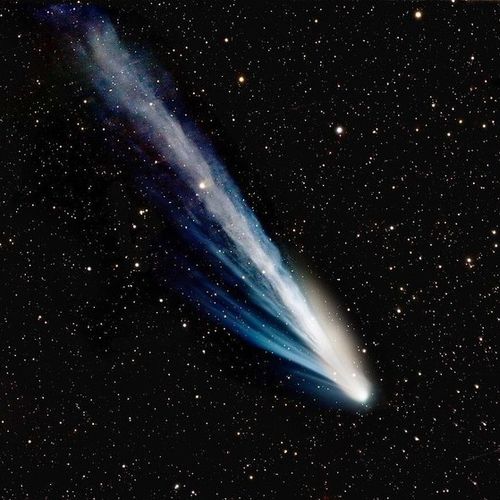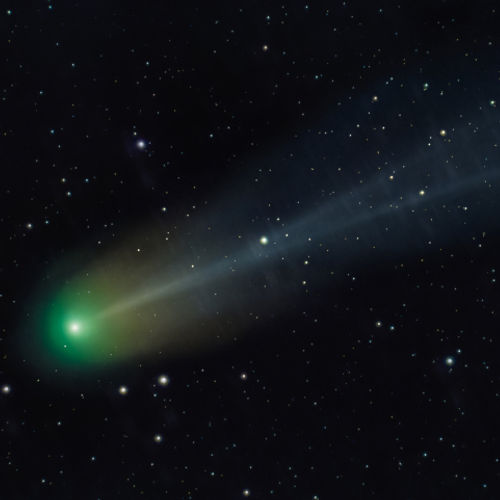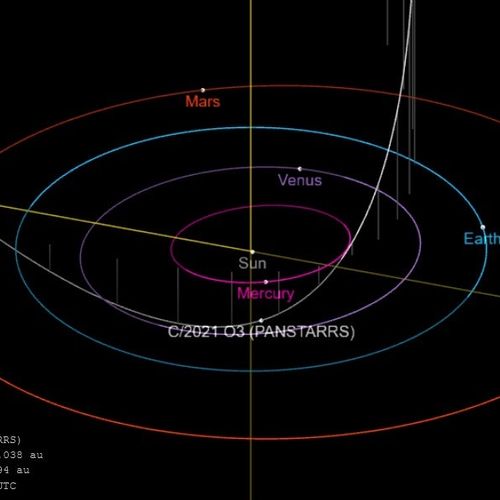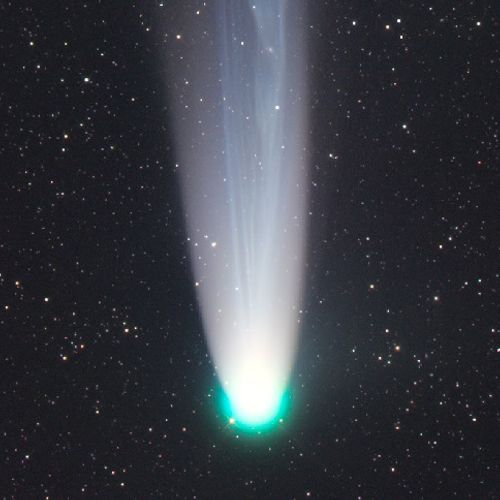
| Added | Fri, 24/12/2021 |
| Источники | |
| Дата публикации | Fri, 24/12/2021
|
| Версии |
Since the beginning of this year, observers on Earth have been watching Comet Leonard, a dirty kilometer-wide snowball made up of ice, rocks and dust.
Now, as it heads towards a close encounter with the Sun on January 3, 2022, several spacecraft with the clear advantage of unobstructed observation of what is happening from the front row are monitoring how the comet is changing and evolving as it heats up.
In particular, two satellites designed to observe the Sun captured a recent video of the bright comet Leonard hurtling past Earth for the first time in 80,000 years.
The Solar Orbiter Heliospheric Imager (SoloHI) satellite took an incredible animated sequence of images at the end of last week (December 17-19), in which Leonard's comet passes diagonally through the entire field of view.
The Milky Way is visible, as well as Venus and Mercury, visible in the upper right corner. Venus is brighter and moves from left to right. Amazing view!
When SoloHI took these pictures, the comet was approximately between the Sun and the spacecraft, and the comet's gas and dust tails were directed towards the spacecraft.
Towards the end of the sequence of images, the view of both tails improves, as the viewing angle at which we see the comet increases, and SoloHI gets a side view of the comet.
Another animated image was obtained by NASA's STEREO-A spacecraft (Solar-Terrestrial Communications Observatory) using the SECCHI/HI-2 telescope. This spacecraft has been observing the comet since early November.
NASA explained that this animated "difference image" was created by subtracting the current frame from the previous one to highlight the differences between the two.
Difference images are useful for seeing subtle changes in Leonard's ion tail (a trail of ionized gases flowing out of the body, or nucleus, of a comet), which becomes longer and brighter by the end of the video.
Comet Leonard came close to Earth on December 12, passing at a distance of 21 million miles (34 million kilometers).
The comet is visible in both the Northern and Southern hemispheres until the end of December.
It was discovered by astronomer Gregory Leonard at Mount Lemmon Observatory near Tucson, Arizona.
The official name of the long-period comet is C/2021 A1 Leonard. At the time of discovery, it was located at a distance of about 5 astronomical units (AU) (approximately at the distance of Jupiter from the Sun).
Even if Leonard's comet survives its journey around the Sun, we will never see it again. It will be ejected from the Solar System after passing perihelion.
At its most distant location, the comet reached aphelion at a distance of 3,500 AU in the Oort cloud about 35,000 years ago. On January 3, 2022, it will be located just 0.62 AU from the Sun, inside the orbit of Venus.
Новости со схожими версиями
Log in or register to post comments

